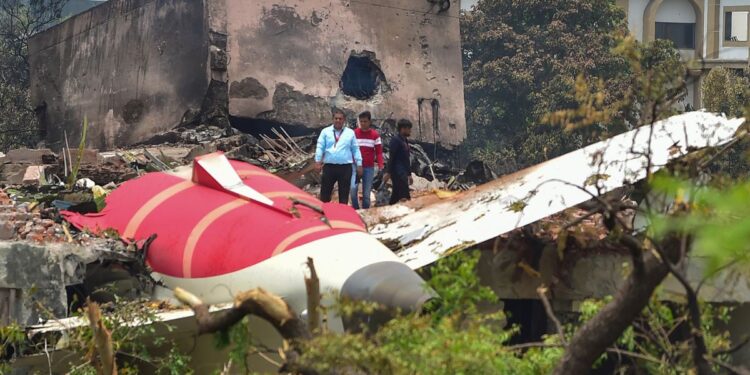An Air India flight from Delhi to New York narrowly avoided catastrophe this week after a sudden loss of altitude that lasted just 30 seconds but has triggered a full-scale investigation. The incident, which occurred shortly after takeoff, saw the aircraft plunge hundreds of feet in a matter of seconds, with terrified passengers describing scenes of panic, unsecured baggage, and rapid pressure changes.
Preliminary reports suggest that human error and procedural lapses may be at the centre of the near-miss. According to aviation officials familiar with the case, the Boeing 777 aircraft dropped over 5,000 feet shortly after engaging autopilot. It is understood that the first officer, believed to have limited experience on long-haul routes, may have misjudged a key instrument input or failed to respond promptly to a warning. Investigators are now focusing on cockpit voice recordings and flight data to reconstruct the sequence of events.
Although the aircraft regained stable altitude within half a minute and ultimately completed the flight safely, the sheer suddenness and severity of the descent have alarmed regulators, industry experts, and the flying public. How could a wide-body aircraft lose control so rapidly in clear weather, under routine conditions?
One hypothesis being explored is an error during the initial climb phase, possibly involving the vertical speed selector or flight mode configuration. In high-stress moments, even small misjudgements can compound quickly, particularly in modern cockpits where automation dominates. If inputs are entered incorrectly or if the flight crew fails to cross-check fast enough, altitude deviations can occur before crews have time to react.
Air India has not yet issued a full statement beyond confirming that an internal safety audit is underway. The Directorate General of Civil Aviation (DGCA), India’s aviation watchdog, has launched its own probe and temporarily grounded the flight crew involved pending further interviews and simulator re-creations.
The incident comes at a delicate time for the airline. Now owned by the Tata Group after its privatisation in 2022, Air India is undergoing an ambitious transformation aimed at modernising its fleet, improving service, and expanding its global footprint. While many observers have welcomed the overhaul, recent headlines have been dominated by staffing pressures, technical complaints, and an aggressive push to ramp up operations, possibly faster than systems and training can fully absorb.
Aviation analysts warn that rapid expansion must not come at the cost of safety culture. “You cannot compromise on cockpit training or standard operating procedures, no matter how tight the schedule or ambitious the growth targets,” said one former airline captain.
In recent years, India’s aviation sector has become one of the fastest-growing in the world, but not without friction. A series of near-misses, emergency landings, and cabin malfunctions has prompted questions about regulatory oversight, crew readiness, and fatigue management.
Passengers on the affected flight, though unharmed, have expressed frustration over what they describe as vague communication during and after the incident. Some reported no explanation from the cockpit at the time, while others said they only learned about the severity of the descent from media coverage days later.
As the investigation deepens, pressure is mounting on Air India to provide answers—not just for what happened in those critical 30 seconds, but for how a flag-carrier with global ambitions can ensure such errors do not happen again.
In the high-altitude world of commercial aviation, minutes—and even seconds—can make the difference between routine and disaster. For Air India, the challenge now is not only technical recovery, but regaining the confidence of a flying public increasingly wary of turbulence behind the scenes.
newshub finance



Recent Comments